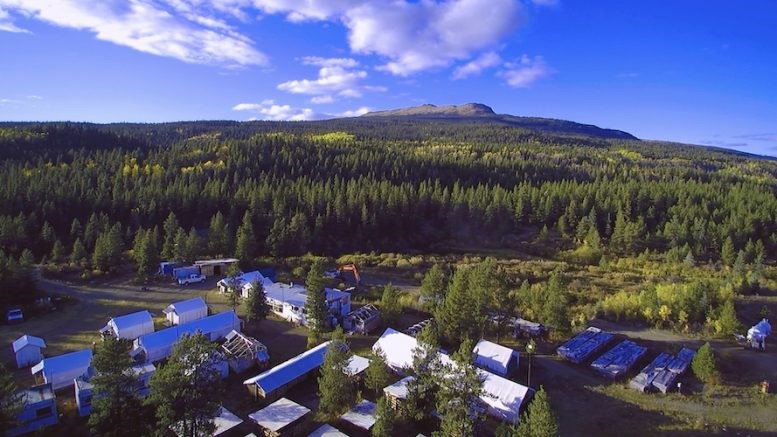If every one of the 16 critical mineral mines or mine expansions proposed for B.C. were to be built, it would generate $36 billion in initial investment, and a staggering total economic output of $791 billion over the life of the mines, according to a new economic impact study commissioned by the Mining Association of BC (MABC).
That’s not including the five new gold and silver mines also proposed for B.C., which would represent an additional initial investment of $1.9 billion.
But MABC president Michael Goehring warns that the B.C. government needs to ensure that B.C. is not at a disadvantage to other mining jurisdictions -- including Ontario and Quebec -- or many of these new mines may never get built.
“B.C. has a reputation as a high-cost jurisdiction, where it’s difficult to get projects done, and we currently lag behind other competing jurisdiction, like Ontario and Quebec, who have launched and funded critical mineral strategies, Goehring told BIV News.
There are currently 17 mines operating in B.C., the report notes -- 10 metals mines and seven steelmaking coal mines. There are also two smelters in B.C. – the Rio Tinto aluminum smelter in Kitimat and a lead and zinc smelter in Trail, B.C.
The mining and smelting industry in B.C. sustains 35,000 jobs, generates more than $18 billion in economic activity and accounted for close to 30 per cent of the value of B.C. exports in 2022, according to an economic impact study by Mansfield Consulting Inc. for MABC.
The federal and provincial governments officially support the development of more mines in the critical minerals space. This includes copper and nickel mines.
There are 14 new mine proposals in the critical minerals space in B.C., plus two proposed expansions of existing copper mines.
Eight of the new mines or expansions would be copper, three copper-molybdenum and one copper-zinc. One of the proposed new mines is nickel, one nickel-cobalt, one niobium and one rare earths.
“The 16 projects are in advanced stages of development,” the MABC says in a backgrounder to the study. “A number of these projects are in the early stages of regulatory review. Others may enter regulatory review within a few years.”
Should all 16 projects get approved and built, it would represent a total investment of $36.5 billion for development and construction – which is roughly the equivalent of a single large liquefied natural gas plant and its upstream operations. (The LNG Canada project’s total capital investment has been estimated at $40 billion, which includes the upstream natural gas wells, processing, pipelines, etc.)
In the near term, the 16 mines would generate an estimated $80 billion in economic output, labour income of $22 billion, total GDP of $38 billion and $11 billion in taxes.
Over the life of the mines, the study estimates total long-term economic output of $793 billion, labour income of $184 billion, total GDP of $398 billion and $155 billion in tax revenue.
“According to the study, each of the 16 critical mineral mines reviewed would generate GDP of $24.8 billion during their respective life span averaging 24.1 years,” the MABC says in a backgrounder.
“Broadly speaking, over 80 per cent of the economic benefits from the proposed critical mineral projects would accrue to British Columbia, with nearly 20 per cent benefiting other parts of Canada.”
The study compared the economic impacts of the new mines to other sectors, such a film and TV, forestry and residential construction.
The study estimated the near-term economic impacts of the new mines would be $31 billion, compared to the B.C. motion picture industry’s total GDP of $2.7 billion. It puts the long-term economic impacts of the new mines at $183 billion, compared to the $2.4 billion from forestry.
The MABC says senior government will need to support the critical minerals sector with infrastructure investment.
“Unlocking critical minerals opportunities in B.C. will require new electrical grid, road, and rail infrastructure,” the MABC says in its backgrounder. “The scale and scope of investments needed will require significant provincial and federal co-investment and coordinated action.”
Goehring also warns that the provincial government needs to make sure fiscal policies don't put B.C. at a disadvantage. The MABC is worried about the province's planned move to an output-based carbon pricing system for industry, for example.
“What’s most pressing is the need for a competitive fiscal policy, which is currently highlighted by the B.C. government’s transition to an output-based carbon pricing system," Goehring said. “B.C.’s mining industry supports a price on carbon, but we currently pay the highest carbon tax in Canada, and the world.
"It's imperative that critical mineral mines in B.C. pay a carbon tax that's competitive with Ontario and Quebec's, while maintaining B.C.'s position as a climate leader. If we don't, that output-based pricing system will negatively impact investment decisions."



